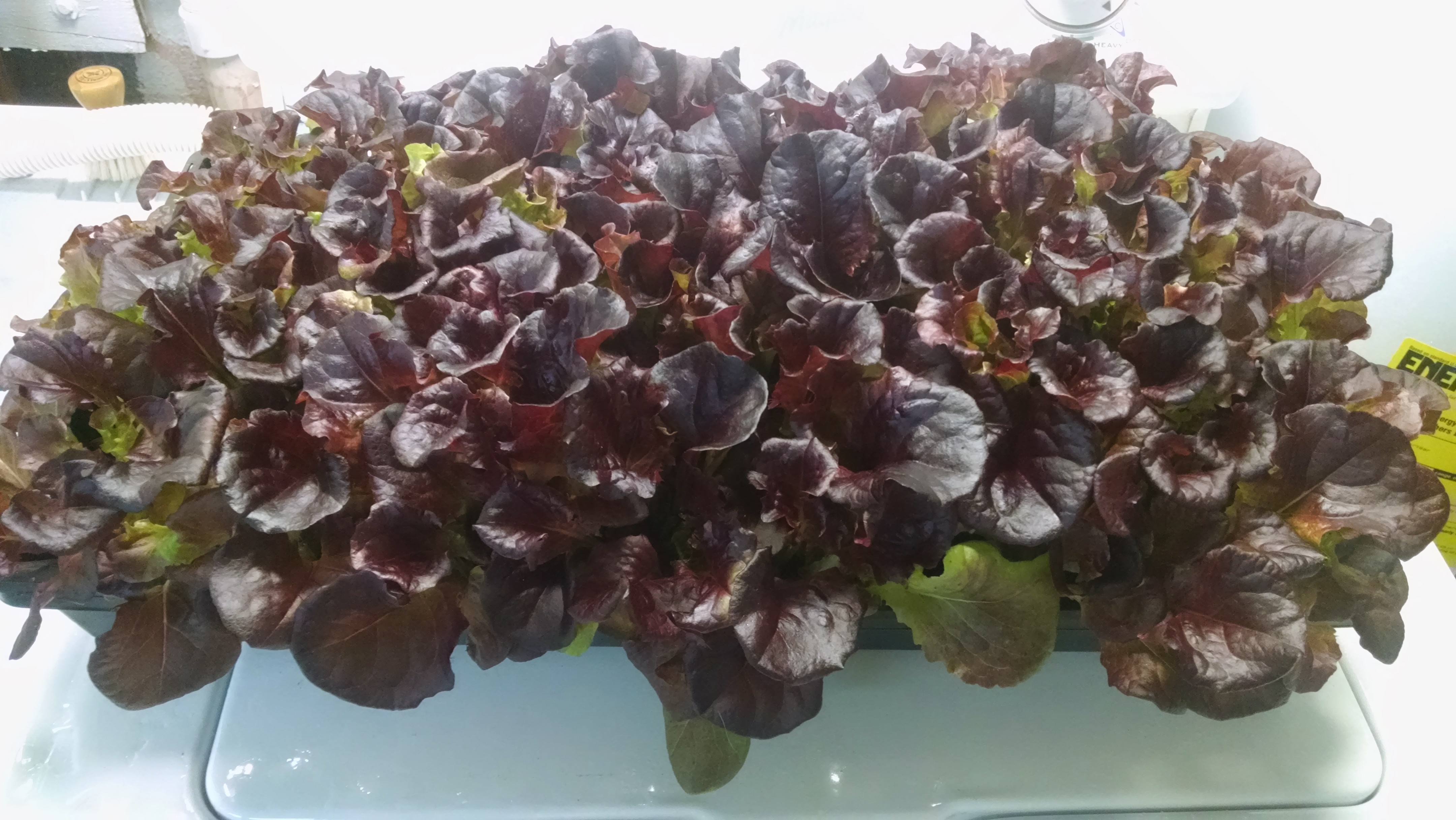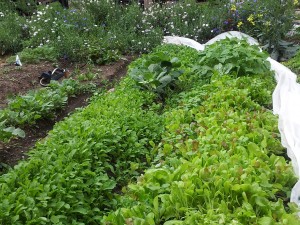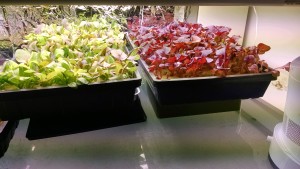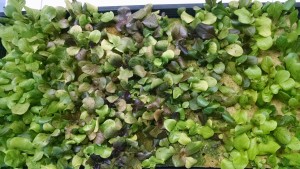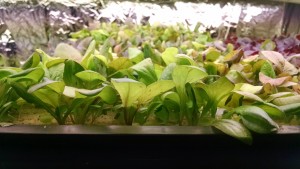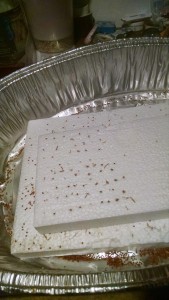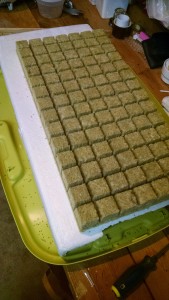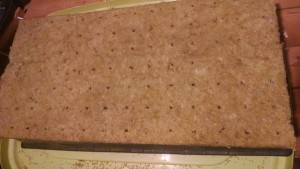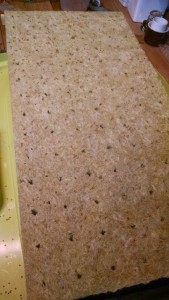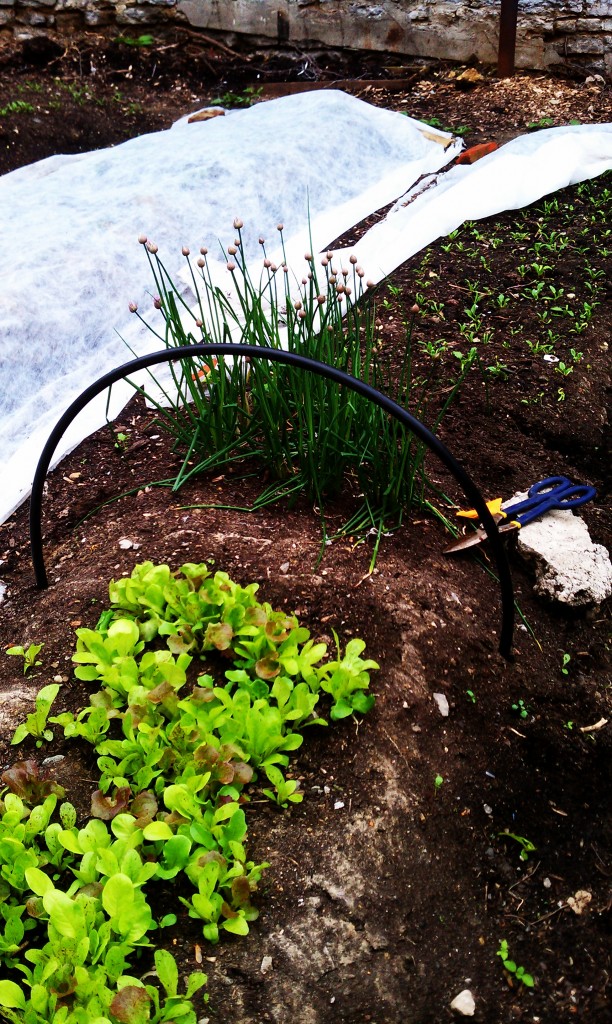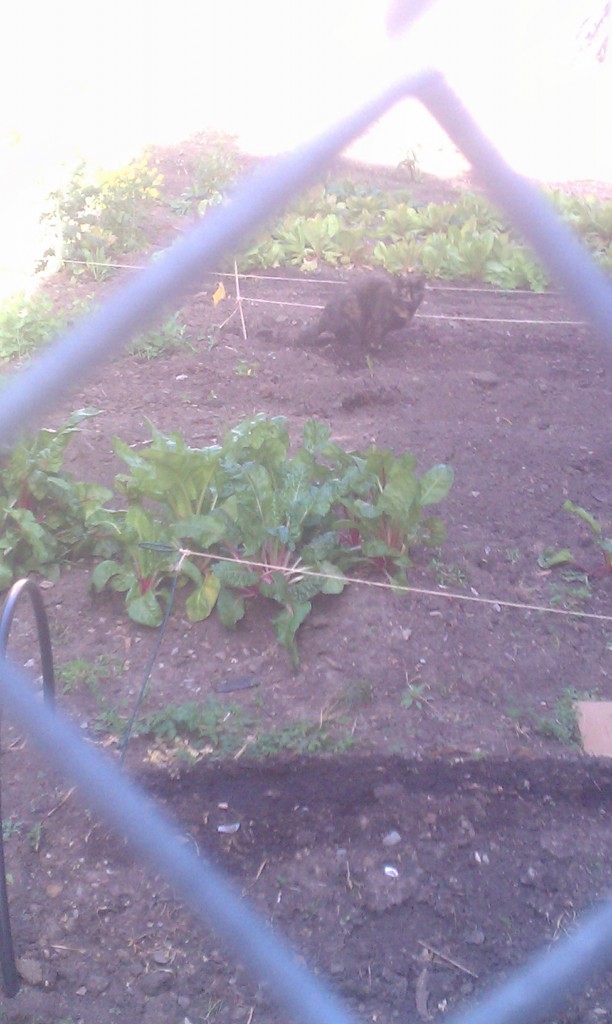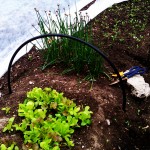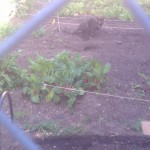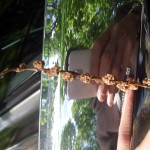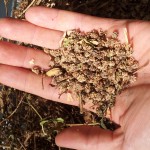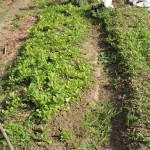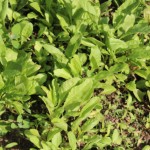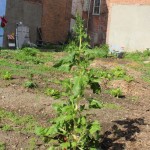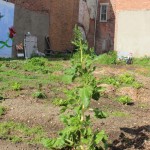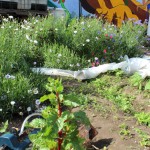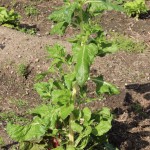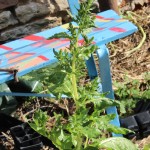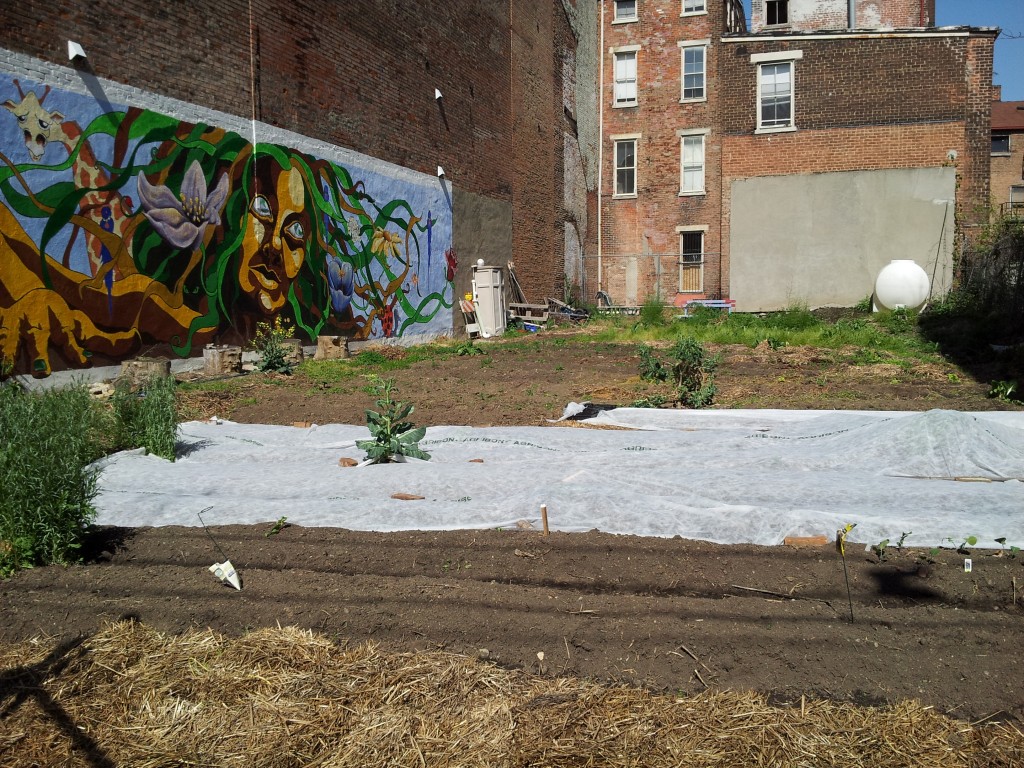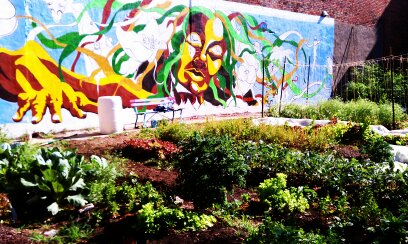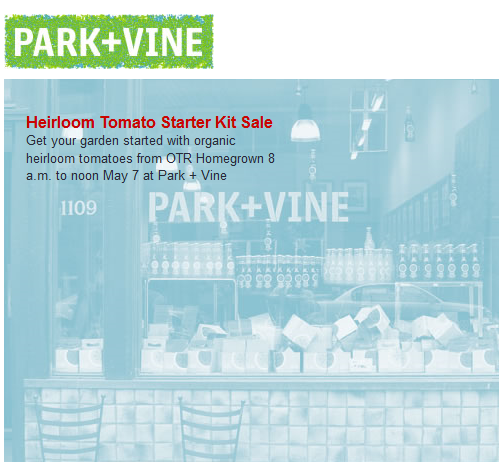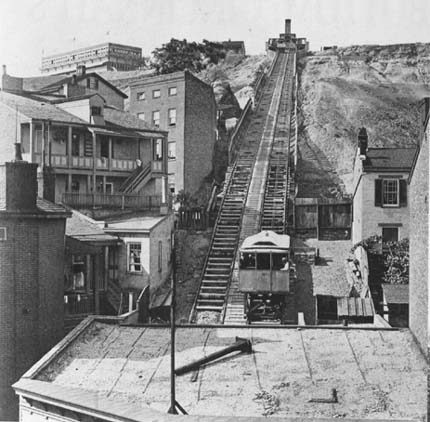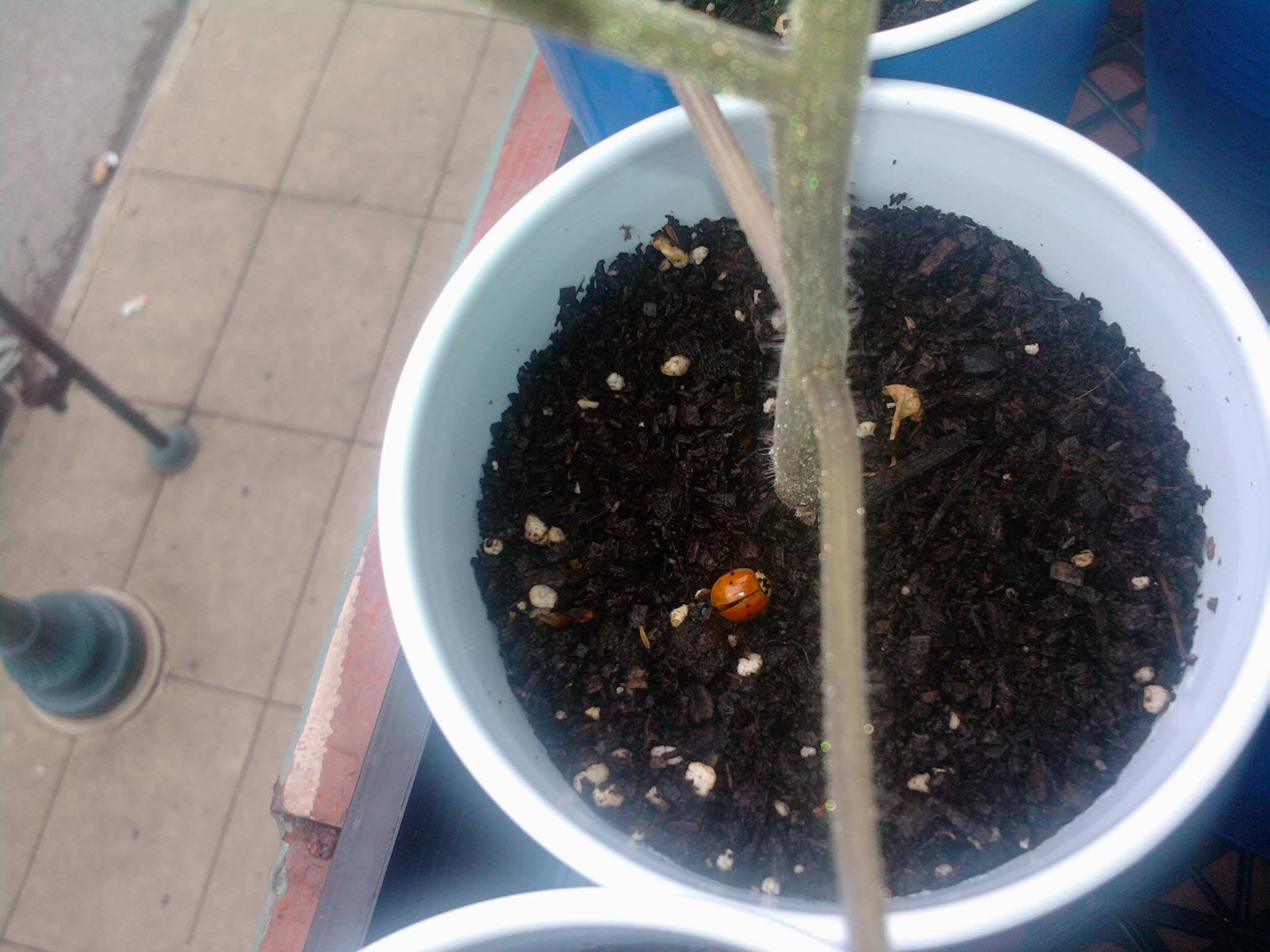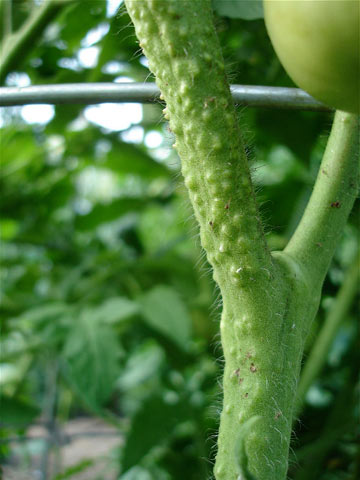Do not waste the light.
My fellow gardeners know that I love leaf lettuces, arugula, and spinach and I’m a huge fan of the high yield planting methods promoted by John Jeavons like scatter planting in soil on raised beds. If you want to grow leaf lettuce and arugula and other densely planted varieties in a hydroponic system here are two techniques for efficient planting without investing in really cool high volume planting machine.
Traditional Scatter Planting Works with Lettuce Seeds.
Scatter planting is the method of scattering seeds on the ground, or in this case onto a grow medium, by pinching them free above the soil allowing the seeds to fall to the soil and evenly spread out. With this method one can fill an entire bed area with seeds allowing plants like leaf lettuce to grow up in contact with each other. The plants should be as close as a half inch to each other but can be as close right next to each other.
Outside on raised garden beds scatter planting works wonderfully, check out how our lettuce beds look at OTR Homegrown.
Using Scatter Planting Techniques Indoors
When planting onto grow mediums like rockwool, lettuce seeds land where they land on the rockwool. They do not bounce or roll around. Because of this you can use traditional scatter planting method to properly get a good scatter of lettuce seeds on a rockwood tray without having to place each seed individually. Rockwool seems to be a perfect medium for growing leaf lettuce trays.
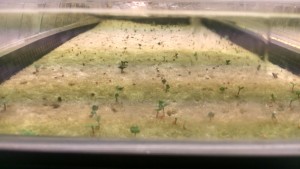
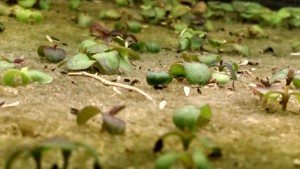
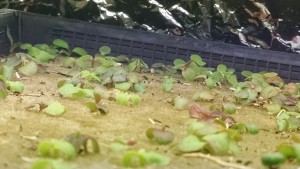
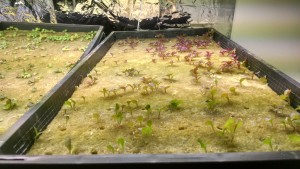
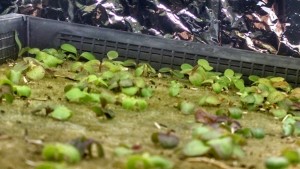
The plants should be as close as a half inch to each other but can be as close right next to each other. With this method one can fill an entire bed area with seeds allowing plants like leaf lettuce to grow up in contact with each other. The plants have each other to lean on supporting the outside leaves and standing them up while no space is wasted in the bed.
Below is a tray of leaf lettuce grown indoors just before the first harvest. Notice how the neighboring lettuce plant helps keep it’s neighbor upright, the leaf lettuce on the outside of the plant do not fall and lay on the “ground”, or grow medium. The leaf lettuce are densely populated maximizing the amount of plants per square foot. Ventilation and having a fan directly on your plants is an important part of this method, and with all indoor grow methods.
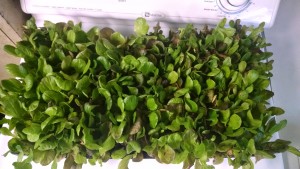
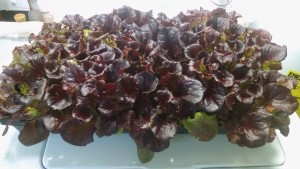
Seeds like arugula though, Bounce!
When you plant seeds like arugula, which are round, they bounce on the rockwool and jump all over the place. It is hard to ensure a good scatter of seed on the rockwool. Without a good spread of see we would end up with empty patches on a garden bed or on an indoor growing tray. Placing each seed on the grow medium one at a time would take way too long
Here is a relatively quick and affordable way to “scatter-plant” arugula seeds for hydroponic systems.
What you will need:
Styrofoam. (The size of your planting medium)
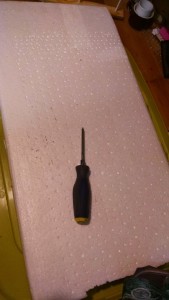
A whole puncher, or screw starter, or Robertson screw driver.
Rockwool or grow medium the size of your tray.
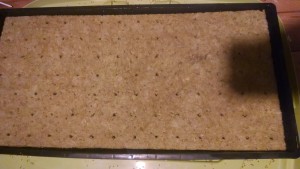
A large tray that your grow medium can fit into.
Step One: On your flat piece of styrofoam use your whole puncher or Robertson screw driver to make a small indentation on your styrofoam. Make rows of indentations so that you have an indentation every half inch. The indentation should be deep enough that one or two arugula, kale type seeds can fit into it. If the indentations are too small it is hard to get all of the seeds in place. If they are too big you’ll get too many seeds in each indentation.
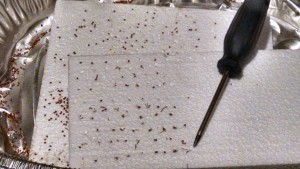
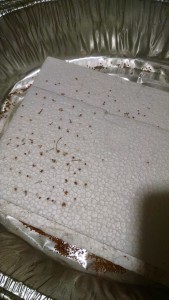
Step Two: Place your styrofoam into your large tray. This tray has to be able to catch seeds that roll over off of the styrofoam.
Now place a handfull of arugula seeds onto the styrofoam and use your hands to roll the seeds around. You can also vibrate the styrofoam gently with your hands to move the seeds around. The seeds will stay put in the indentations if your indentations are large enough. If they are too large two many seeds will collect in the indentations.
Once you have filled your indentations with seeds use your hand to remove the access seeds into the tray your styrofoam is sitting in. This tray should collect all unused seed for later use. Make sure this tray is not wet.
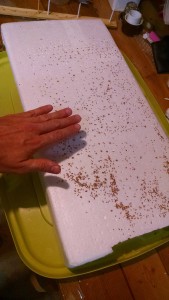
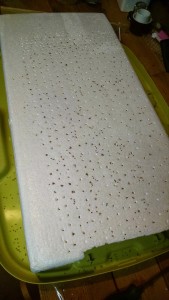
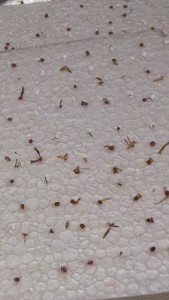
The Flip onto the Rockwool.
Place your rockwool face down onto the seed side of the styrofoam.
Holding the grow medium in place flip over the grow medium and styrofoam tray. Tap on the top of the styrofoam tray gently to ensure the seeds come out of their indentations.
Check out this scatter of round arugula seeds. Nice, no?
Lift the styrofoam and you should now have a nice scatter-plant of arugula seeds on your rockwool.
It worked wonderfully.
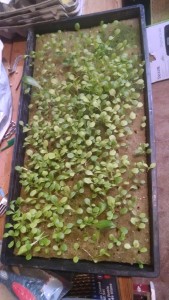
Hydroponic systems that utilize the high yield methods of people like John Jeavons, who decades ago realized that there should not be space in the garden that is not converting light into food mass, are more likely to make the most of the cost of materials and energy.
Grow.
Written by Mark Stegman, Co-owner of Cincinnati Watch Company and The Langley Group.

